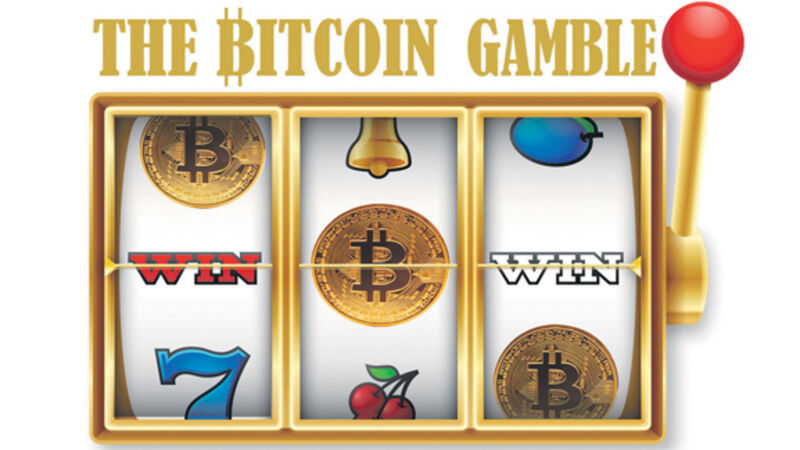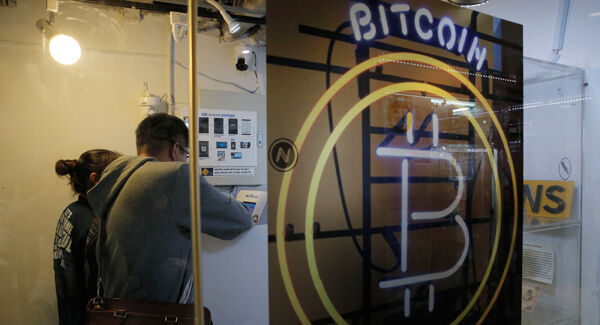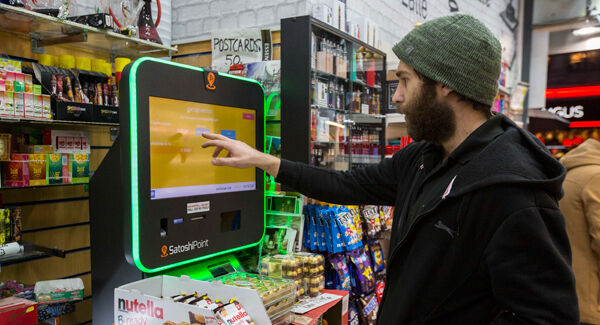The bitcoin gamble: What does the future hold?

The surge in Bitcoin has seen values soar more than 16-fold this year alone to above $17,000. But what is it, where did it come from, how does it work and what does the future hold?
T'S a form of money that’s remarkable for what it’s not: It’s not currency you can hold in your hand. It’s not generally recognised by most main street shops. It’s not issued or backed by a national government.
At their core, Bitcoin and its imitators are sets of software protocols for generating digital tokens and for tracking transactions in a way that makes it hard to counterfeit or re-use tokens. A Bitcoin has value only to the extent that its users agree that it does.
The currency crisis in Venezuela provides a great use-case example. The local currency, the bolivar, is in crisis and being inflated into extinction. People benefitting from ultra low cost electricity are mining Bitcoin to buy much needed food and medicine. Bitcoin is also popular in Zimbabwe where the currency is worth twice it’s current world dollar market value.
The bank bail-in in Cyprus 2013 saw a substantial increase in Bitcoin’s value as people were justifiably desperate to liquidate the euro in their bank accounts. There are similar worries in the EU with the introduction of “Amendment 13” by the European Central Bank which proposes to remove protection on bank deposits below €100,000.
Bitcoin can be seen as a hedge against such uncertainties: a kind of “insurance”, even if it is a speculation.

People can buy the coins directly from exchanges like Coinbase. Accredited investors can also invest in vehicles like the Bitcoin Investment Trust, which tracks bitcoin’s price.
Soon investors will be able to invest through their regular brokers in Bitcoin futures, and possibly in Bitcoin exchange-traded funds, once regulators feel comfortable with the idea.
But be warned: Even plenty of people who believe in Bitcoin’s future think some wild rides lie ahead.
Bitcoin is only one of an estimated 2,000 cryptocurrencies that exist.
It’s an electronic ledger (a digital file) that cannot be altered or forged due to mathematical near-impossibility and the fact that copies of these ledgers are distributed across the internet — each ledger must match exactly to be verifiable. Each Bitcoin transaction requires a consensus to be reached by the Bitcoin network in order to be validated. This takes an average of 15 minutes to complete — as in, it takes 15 minutes to get paid.
The original software was laid out in a white paper in 2008 by a person or group of people using the pseudonym Satoshi Nakamoto, whose identify remains unknown, despite several efforts to assign or claim credit.
Online fantasy games had long used virtual currencies. The key idea behind bitcoin was the blockchain — a publicly visible, largely anonymous online ledger that records Bitcoin transactions.
Think about what happens if you make an online transfer using a bank. It verifies that you have the funds, subtracts that amount from one spot in a giant database it maintains of accounts and balances, and credits it in another.
You can see the result if you log on to your account but the transaction is under the bank’s control. You’re trusting the bank to remove the right amount of money, and the bank is also making sure you can’t spend that money again.
The blockchain is a database that performs those tracking functions — but without the bank or any other central authority.
It’s done by consensus on a decentralised network. Bitcoin transactions can be made through sites offering electronic “wallets” that upload the data to the network. New transactions are bundled together into a batch and broadcast to the network for verification by so-called bitcoin miners.
Anybody, so long as you have really fast computers, a lot of electricity and a desire to solve puzzles.
The transaction data in each batch is encrypted by a formula that can be unlocked only through trial-and-error guessing on a massive scale.
The miners put large-scale computing power to work as they compete to be the first to solve it.
If a miner’s answer is verified by others, the data is added to a linked chain of blocks of data and the miner is rewarded with newly issued bitcoin.
Because every block contains data linking to earlier blocks, an attempt to spend the same bitcoin twice would mean revising many links in the chain. Plus, as miners compete, they verify each other’s work each step of the way.
Yes, back when its primary appeal was its relative anonymity. It was, and still is, used by websites peddling everything from arms to drugs to paid hits.
One such $1.2bn marketplace, Silk Road, was shut down by the FBI in 2013. But others soon took its place.
Joseph Stiglitz, a Nobel laureate in economics, said recently that Bitcoin “ought to be outlawed” because it’s designed to evade regulation and “doesn’t serve any socially useful function”.

Bitcoin’s reputation has improved, partly because there are fewer large-scale thefts like the one in 2014 in which bitcoins were stolen from a bitcoin exchange called Mt. Gox. (Security has improved, but it’s still an issue.) And many technology and financial firms grew interested in blockchain as an idea separate from bitcoin.
Enthusiasts see it as a new way of doing all sorts of business. Costs could be lower without a central middleman doing the work of keeping track of transactions, and charging for it.
Banks and stock exchanges have invested heavily in developing blockchain technology, while retailers are experimenting with using blockchain for ensuring food safety.
Central banks are even speculating about issuing blockchain-based official currencies. And other forms of blockchain emerged, often using their own cryptocurrencies to facilitate transactions. The most prominent is the etherium blockchain, sometimes described as a platform for so-called smart contracts.
As the number of cryptocurrencies and tokens multiply — they now reach into the thousands — Bitcoin remains the best-known, time-tested and valuable. That’s led to it being viewed by some as the most predictable venue for people wanting to bet on blockchain’s exponential growth.
New investors, and expectations of many more to follow, has increased the price of a Bitcoin drastically this year. CME Group and other exchanges plan to offer bitcoin futures contracts, potentially expanding bitcoin’s appeal. The fact that Bitcoin’s software guarantees there will be a finite supply has added to the fear of missing out for some investors. Coinbase, a Bitcoin exchange, was overwhelmed by two to three times its normal traffic on November 29, when Bitcoin’s price soared past $11,000, making its service temporarily unavailable to some users. New crypto-focused hedge funds are opening up weekly, and already surpass 100. Most of them invest at least part of their funds in Bitcoin.
Possibly. Some people, most notably JPMorgan Chase, call bitcoin a “fraud.” Yet his own bank is considering offering Bitcoin futures to clients. Fund manager Mike Novogratz calls cryptocurrencies “the biggest bubble of our lifetimes,” and yet he is starting a $500m fund to invest in them. Depending on whom you talk to, bitcoin’s value could double again — or it could go down to zero.
- Ethereum: Even in the complicated world of Bitcoin, Ethereum is hard to get your head around. It’s difficult to buy Ethereum directly, so most investors first buy Bitcoin and then trade bitcoin for Ethereum.
It was launched in 2015, allowing users to build “decentralised applications”, spending tokens called “ether” to buy processing power on computers run by other members of the network.
Those applications can offer anything from file storage to financial services or simple games, all in a way that is impossible for any centralised authority to shut them down.
- CryptoKitties: one of the oddest Ethereum projects in operation, CryptoKitties is a three-way cross between Tamagotchis, Beanie Babies and animal husbandry.
Users can buy, sell and breed the eponymous cats, with reports suggesting the CryptoKitties network is responsible for 11% of all traffic on Ethereum.
A new “gen0” cat is born every 15 minutes, which the company auctions off, and it also takes a cut of all other CryptoKittie sales.
The most expensive CryptoKitty sold to date, Founder Cat #18, went for more than $110,000 on Thursday.
- Monero: A direct alternative to Bitcoin, it allows users make the same sort of digital transactions as its older sibling, but with greater privacy protections. The currency is also altered to make it easier to generate new coins using the sorts of processors in computers and phones, rather than requiring specialised “mining rigs” — making it very popular with online criminals.
Investors such as Bill Gates, Warren Buffet, Eric Schmidt of Google, Al Gore, Richard Branson and Peter Thiel of Paypal to name but a few, have bought into cryptocurrencies, while companies such as Microsoft, Dell, Apple, Time Magazine and Tesla have started to accept Bitcoin as payment.
Steve Wozniak, the technical wizard behind Apple is a great supporter, while Bill Casey, the bestselling author of Crisis Investing has succumbed to Bitcoin’s charms. Max Keiser, well-known amongst the anti-establishment economic pundits has always been a great supporter.
Hyosung, the major ATM manufacturer, recently added Bitcoin transactions to it’s machines. This will allow ordinary punters to buy Bitcoin on the high street. There are many exciting prospects under development for Bitcoin and other cryptocurrencies.
Technology such as Festy, created by an Irish crypto payment startup, will enable lightning fast transactions via a currency known as Dash. Such transactions will require no more than a swipe across a scanner.
Bitcoin is a modern-day store of wealth much like gold and silver. However, unlike these precious metals Bitcoins cannot be confiscated at the border.















